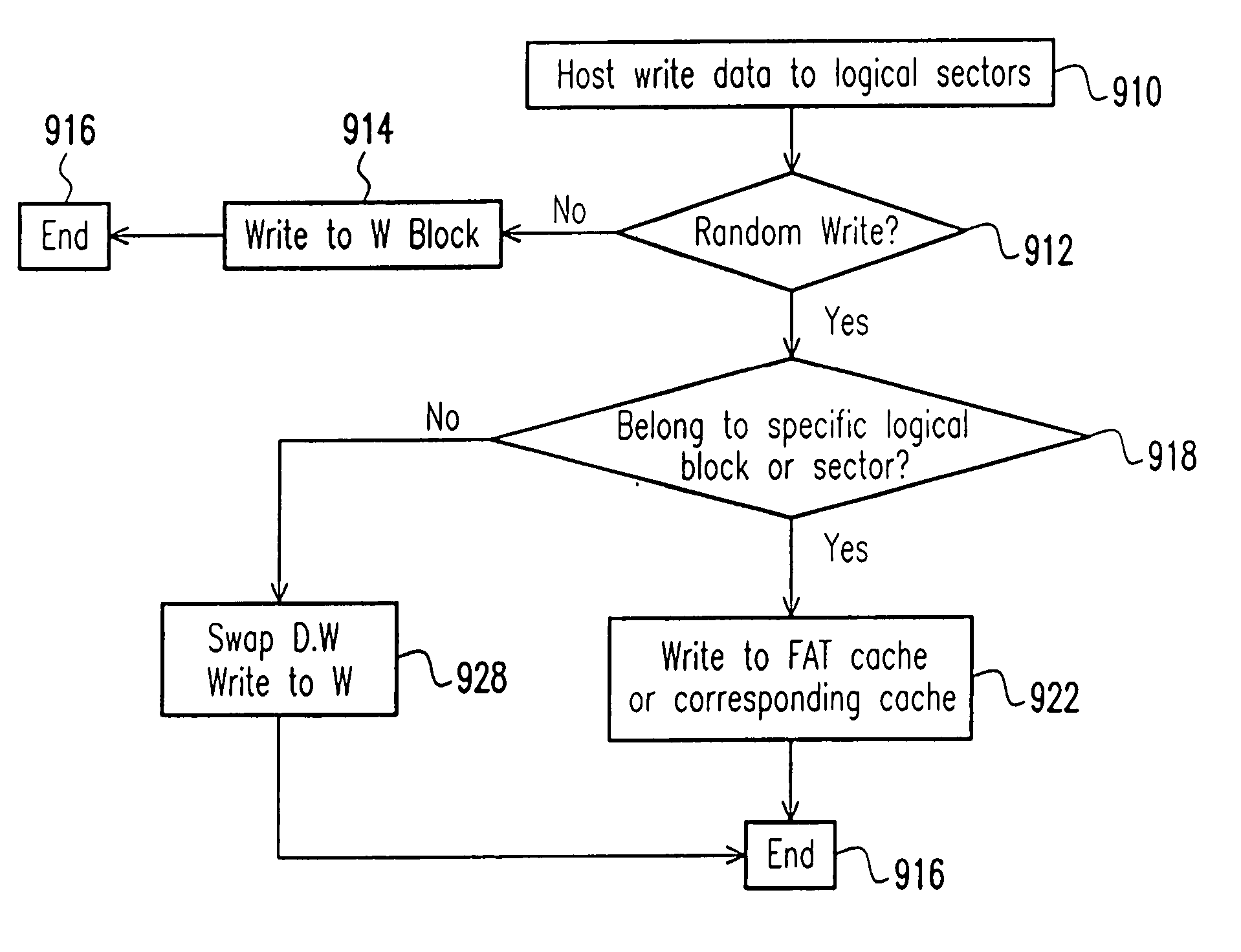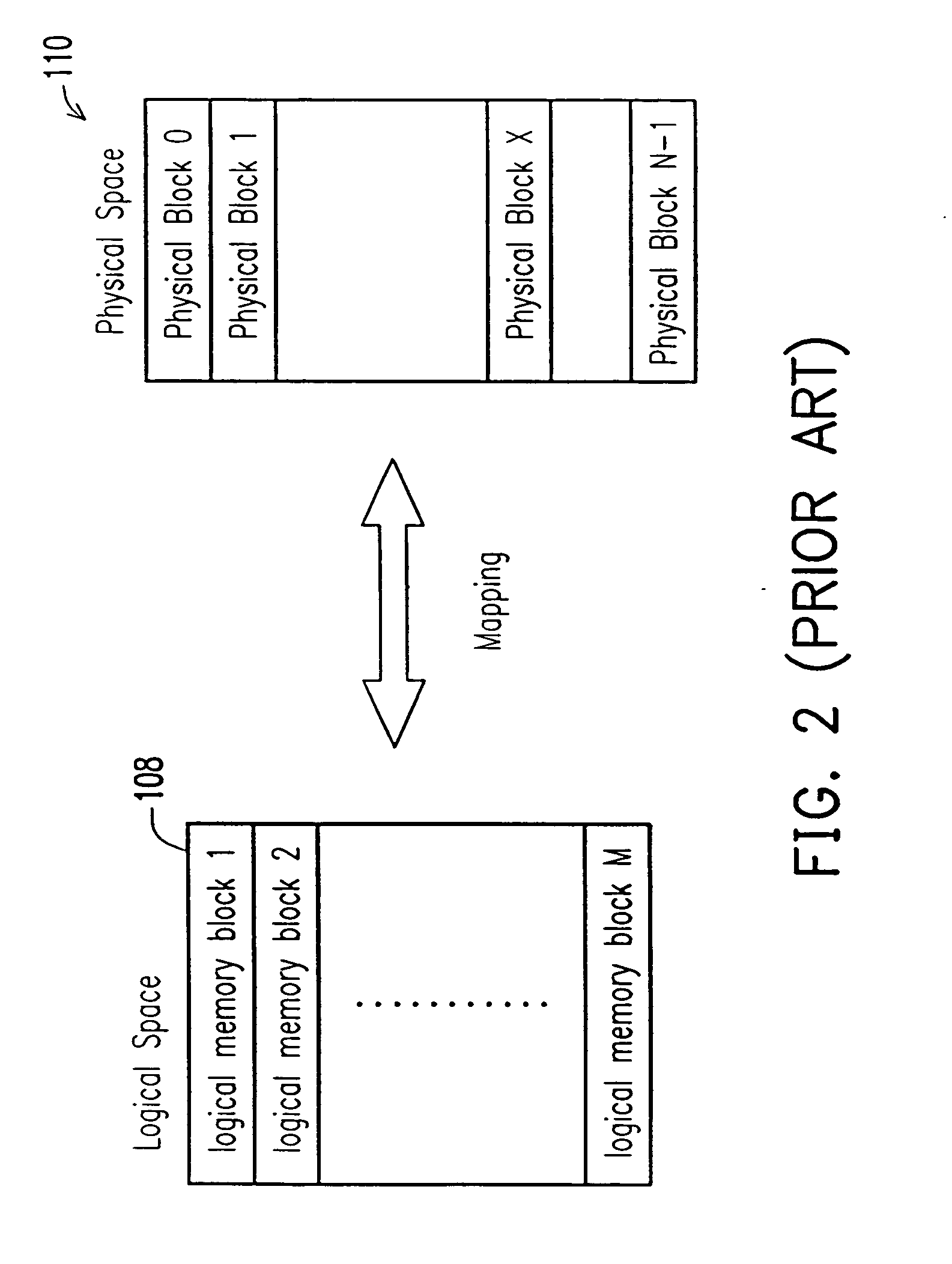Nonvolatile memory unit with specific cache
a memory unit and cache technology, applied in the field of digital data storage systems, can solve the problems of high power consumption, inability to withstand physical shock, high power consumption, etc., and achieve the effect of reducing the frequency of swap operation
- Summary
- Abstract
- Description
- Claims
- Application Information
AI Technical Summary
Benefits of technology
Problems solved by technology
Method used
Image
Examples
Embodiment Construction
[0038] One of the features of the present invention is to reduce the frequency of swap action when a random write is required to the nonvolatile memory unit within the memory storage device. After inspecting the types of random write, the present invention found that the random write resulting in a swap action will always occur when the host writes FAT or directory information into the memory storage device during file access. The present invention then propose to create a specific cache area, which can include, for example, the FAT cache for storing the FAT-like information, the directory cache for storing the directory-like information, or other corresponding cache for storing data belonging to a specific logical sector or logical block. Each FAT or directory cache is comprised of at least one physical block. As a result, some kinds of random write will not be necessary to take the swap action in each time of data write. Then, the data writing speed can be effectively improved. An...
PUM
 Login to View More
Login to View More Abstract
Description
Claims
Application Information
 Login to View More
Login to View More - R&D
- Intellectual Property
- Life Sciences
- Materials
- Tech Scout
- Unparalleled Data Quality
- Higher Quality Content
- 60% Fewer Hallucinations
Browse by: Latest US Patents, China's latest patents, Technical Efficacy Thesaurus, Application Domain, Technology Topic, Popular Technical Reports.
© 2025 PatSnap. All rights reserved.Legal|Privacy policy|Modern Slavery Act Transparency Statement|Sitemap|About US| Contact US: help@patsnap.com



